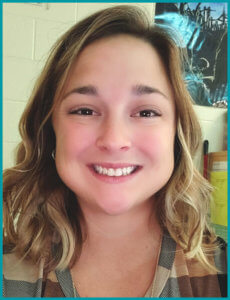by Michelle Lindsey
My students used to lose their sources.
Often.
On Monday, they would find this life-changing source that was the answer to all their questions, and by Tuesday, it would be lost to the Google algorithm universe, never to be seen again.
Once I started teaching AP Capstone, these lost sources were a much bigger deal because those sources could have been a gap to be filled in AP Research or a unique perspective discovered in AP Seminar.
If it wasn’t the disappearance of sources that was slowing down their research, it was the slip in memory as to why they collected a certain source in the first place.
Or, and I’m sure we all have these kids, I would have students who save every single source they stumble upon that has some, even if it’s slight, connection to their topic and would be overwhelmed by information overload when it came time to gather specific evidence from said sources.
I knew I had to think of a method to keep the kids organized and on track before they got frustrated and dramatically dropped the class because their research was soiled by our outdated Chromebooks.
I needed something that would make it easier for students to keep track of their sources, remind them why they found that source worthy, and minimize the number of sources they compiled so we could focus on quality.
I began by thinking about everything I have them do once they find a source they might want to use in their research. Once I had that list gathered, I created this living, breathing chart that they keep in a Google Doc and update daily.
What I want them to include:
• The link to the source
• The author and their credentials (validation)
• Why they found the source useful with page or paragraph numbers
• Lenses and perspectives it provides
Something that looks like this:

Source Title
I want them to include the title of the source and not just the link. I can’t explain how many times my students find the same source multiple times without realizing it (or perhaps they do realize it and they are hoping I won’t notice).
Link
I also want students to create a live link to put in their document. I do this for several reasons:
- I want them to have easier access to their information.
- I want to make it easier for their peers to double check their sources. We do a quality check before we start compiling information where the students comb through their classmate’s sources to ensure credibility.
- It helps when the Seminar students are in teams for Performance Task 1 and can share sources.
- It’s easier for me to check their sources if I can just click on the link.
Author Credentials
In this column, I have them complete their RAVEN or CRAAP. These pneumonic devices represent areas of critique when checking the credibility of sources. RAVEN stands for reputation, ability to observe, vested interest, expertise, and neutrality.
CRAAP is similar but I prefer this device for my kids, specifically for AP Capstone. It stands for currency, relevance, authority, accuracy, and purpose. I prefer this method because it includes “currency” and “relevance” which helps my students avoid decades-old research and research that only loosely connects to their topic.
Lens(es)
I have my students record the lens that is represented in the research. Most research for argumentative papers includes a variety of lenses. AP Capstone has students explore scientific, historical, ethical, economic, artistic, etc. lenses in their research to ensure they are exploring multiple aspects of the issues they choose to tackle.
Perspective(s)
Within those lenses, students need to ensure they have a variety of perspectives or stakeholders. They need to include whose voice we see in their source.
By having students record the lenses and perspectives, they can clearly see the gaps in their research. For example, if they are exploring school uniforms and realize they only have the economic implication of the uniforms from the perspective of the affluent students and parents, they can see they are missing other voices who have a vested interest in this topic.
Why I Need It
This column is important. This last column is the one that helps my over-researchers narrow down their coveted sources. If they can’t pinpoint exactly why they need it, if they can’t put their need into words, then perhaps they don’t need to include it. Or, if they aren’t sure they need it, they just want it, I have them include this too because sometimes it offers some ideas they can cite in their introductions.
This chart works for any research project. It was created because I had well over 70 AP Seminar students who were the type of students who would pull important handouts from the bottom of their back backs and uncrumple them hoping it was the reference sheet I asked them to keep in a safe place. These are the same students who were brand new to research and needed a system to organize their information. They need systems to organize their entire lives, but I could only start here…for now.

Michelle Lindsey has been a high school teacher in Florida for over ten years, and currently teaches AP® Capstone as well as literature and writing courses.
 Help
Help